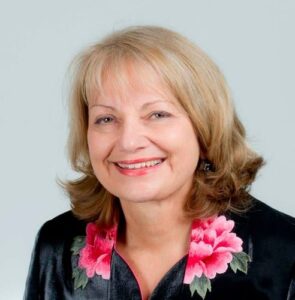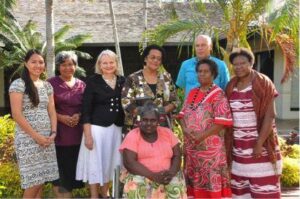By: Sharman Stone
Financial inclusion gives women greater choice and control over their financial lives.
I know this after sitting with village savings clubs and microfinance groups in Vietnam, Solomon Islands and Papua New Guinea. Sitting among them, I witnessed a new generation of financially empowered women working to lift their living standards in the Indo-Pacific.
At the same time, I have met women tackling serious economic barriers in their families, villages and workplaces. Lack of access to finance is often a recurring theme.
When women are not equal players in the economy and society at large, how can we expect to build a prosperous future for everyone?
Australia wants to be a global leader on gender equality – through our actions as a development partner and through our foreign policy advocacy. We have a unique chance to realise both of these aims through our role on the UN Human Rights Council.

Our Gender Equality and Women’s Empowerment Strategy provides the policy that sits behind this important work.
One of the ways we implement this strategy is by investing in projects and programs that boost women’s economic empowerment across the Indo-Pacific.
As I have witnessed, programs that focus on financial literacy, access to finance, mobile banking and financial inclusion play a big role in Australia’s gender equality investment portfolio.
Our programs take different shapes and forms depending on the nature and scale of the market we are working in, but improving women’s financial inclusion is often the major priority.
For example, our financial inclusion program in Bac Kan Province in northern Vietnam with Care International looks quite different to our work in Solomon Islands and PNG through the Pacific Financial Inclusion Program (PFIP) – and I’m not just talking about swapping motorbikes for boats!
Women’s World Banking, another program we fund, is reaching 24.5 million low-income women in 29 countries, providing access to the financial tools and resources they require to build security and prosperity.
While our approaches may change according to the market – the behaviors and barriers that shape women’s banking today share some common themes.
Women are natural savers, managing to save on average 10 to 15 per cent of their earnings despite low and often unpredictable incomes.
But we also know that women have less access to credit, bank accounts, insurance and other financial products that are essential to their economic participation.
For low-income women this is compounded by not having a safe place to save due to mobility and time constraints, as well as low levels of financial literacy.
So they are forced to save in less reliable ways: at home in a drawer or under a mattress, by buying excess stock for their businesses.
Having a safe place to save and build assets is especially critical—no matter what women use to refer to ‘savings’—whether it be “storing” or “keeping” or “gathering.”

Handheld mobile savings and credit devices link women directly to the provider, reducing the risk, distance and cost of women’s financial transactions.
Yet women, who so often play leading roles in household financial management from housing, nutrition and education, too often lack access to formal methods for managing cash flows. This makes women and their families vulnerable to economic shocks and gender based violence.
This is why Australia is partnering with programs like Women’s World Banking, Care International and the Pacific Financial Inclusion Program, so we can accelerate financial inclusion and economic empowerment for women in our region.
Of course, a stronger region where women stand shoulder to shoulder with men in the economy helps to enhance Australia’s prosperity too.
With Australian support, more than 769,000 Pacific women have accessed financial services through PFIP.
Through Women’s World Banking, Australia has supported Indonesia to develop a National Financial Inclusion Strategy Secretariat; helped a Cambodian digital insurance provider develop ways to better reach women; and empowered a leading private retail bank in Vietnam to develop a strategy to serve the low-income women’s market.
Wherever we work, we follow the “Do No Harm” principle to ensure we are empowering women economically and improving their livelihoods without impairing their safety and wellbeing.
This International Women’s Day, Australia is proud to #PressforProgress in women’s economic empowerment by funding programs that improve women’s access to financial services.



